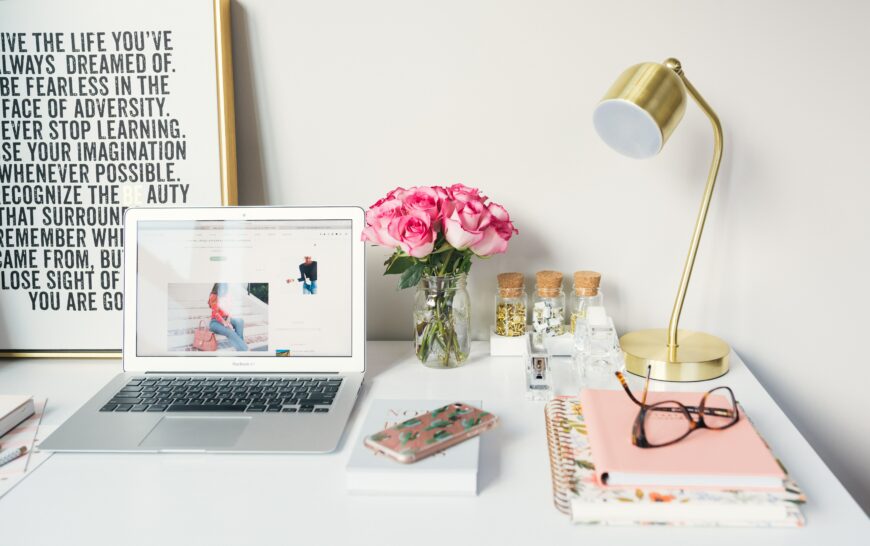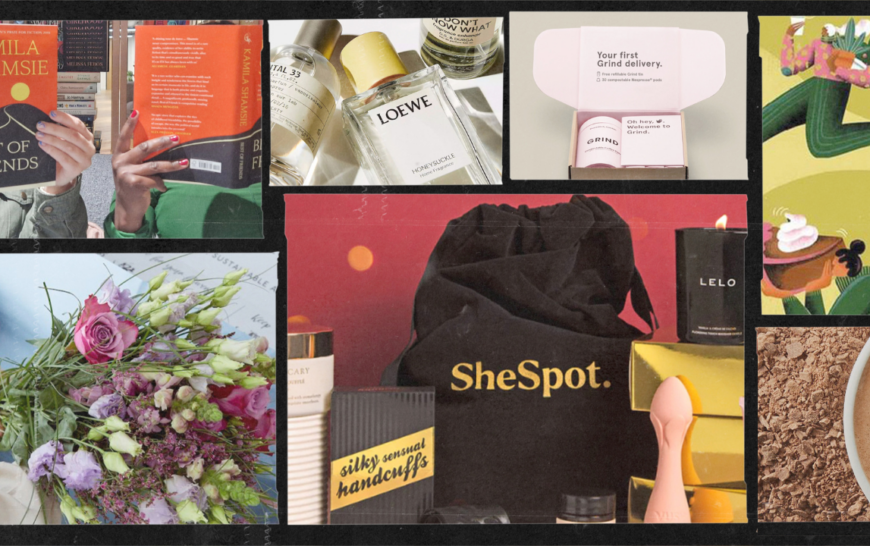
There’s no denying that self-portraiture takes time and patience but it’s a great way to get creative with your photography and challenge yourself.
Despite the softening of lockdown measures, many of us are still restricted to shooting and styling our own content from home or whilst out on our socially-distanced walks, so now’s a good opportunity to build your confidence and get familiar with shooting self-portrait.
We’ve pulled together a few fail-safe tips to help you capture your best self(ie). Ready for your close-up?
Tool-kit essentials
To get the best results, use a tripod (camera or phone) with wireless remote shutter or self-timer, shop our top pick here. If you haven’t got a tripod, you can also use the front-facing camera on your phone on self-timer mode, propped up against a bookshelf or a ledge. Use burst mode and move slowly to get a variety of angles/poses to choose from.
You can also try using the portrait mode on iPhone, or a low F-Stop (4 – 5.6) to achieve a lovely blurry background in your photos.
Shoot with natural light
When shooting indoors, position yourself by a window, ideally with the light source directly in front of you. If you’re outside avoid harsh direct sunlight and instead head for shade or wait for some cloud cover to avoid squinting into the sun.
If you’re shooting around your house, find some interesting shadows on walls and experiment with their shapes. Wine glass and flower shadows always make for a great photo.
Golden hour is every photographer’s dream – if you’re after that beautiful soft dreamlike glow, get outside with your camera a few hours before sunset. It’s basically magic.
Focus on a feature
You don’t always have to get your whole body in frame when you’re shooting self-portrait. The real beauty of self-portrait is in capturing your true ‘self’ and our hands and eyes are the best storytellers.
Try standing relatively close to the camera and reaching out a hand towards the lens for an arty editorial vibe or shoot a close up of your eye looking straight into the lens. You can then make a 9 x9 collage of your self-portrait best bits – a little bit of you in each square.
Another tip is to place a small mirror on the bed and capture a detail such as a necklace or a frilly sleeve.
Use props
Awkward hands? No problem. If you’re finding it hard to know what to do with your hands in your photos, holding a prop can help keep them occupied. Magazines, a bag, a bouquet of flowers, a cup of coffee or a beauty product – the world’s your oyster.
Top tip: never underestimate the power of a plain white sheet, a backdrop stand and a tripod, my friends. If you haven’t got an abundance of plain walls in your home, this is a great alternative and it just so happens to look very fashun editorial, too.
You can use all kinds of items around your home for backdrops and setting props. Here’s a few of our go-tos:
- Plain walls
- Curtains
- Bed sheets
- Plants / dried flowers
- Vases
- Chair / stool
- Books
Shoot nice and early
Lockdown or not, shooting at peak time with lots of people and busy streets to navigate can be tricky. Make your life easier by shooting first thing in the morning or later in the evening during golden hour. Quiet locations often make for the best spots for self-portraiture. Go and explore and enjoy the calm before the rest of the world wakes up.
Consider the colours of your photos
What colours will you be wearing and how will these complement or contrast your backdrop? Wearing a bright orange raincoat in a green forest setting can look much more effective than wearing brown or green in the same setting, for example.
Shoot your reflection
Shooting directly into a mirror to capture your reflection can create a beautiful self-portrait. It also looks pretty cool to have your camera or phone in shot. Experiment with other reflective surfaces like puddles and windows, or use natural light to shoot your shadow form.
Try black and white
Removing colour from your self-portrait will dial up the drama in your composition and heighten mood and emotion. It’s particularly effective when you have a photo with a strong contrast of light and dark. If you think about wedding photography, for example, the white of the bride’s dress pops when set against a dense forest or a dark and atmospheric church venue. Play with the contrast and shadow in post-production when you’re editing to make the black and white edit really stand out.
Play with angles
Self-portrait doesn’t always have to mean shooting front-on at eye level. Change the perspective by shooting from above or below and start to create a visual story.
Top tip: Put your phone on self-timer and tape a cereal box to your ceiling to hold your phone for the perfect from above photo. Et voila!
Add texture and character to your photos
Images captured on a film camera have a beautiful raw texture, but you don’t need to be a film photography whizz to achieve that retro look in your photos. Whether your portraits are colourful or B&W, you can recreate the nostalgic film effect by adding grain (it might be under ‘texture’ or ‘detail’ in your editing app). You can also play with saturation to make your self-portrait to look less vibrant and more tonal and timeworn. Try shooting through sheer fabric and lace to create hazy, ethereal self-portraits, too!
Don’t be afraid of movement
Your self-portrait doesn’t always have to be perfectly sharp and in focus – sometimes blur and movement make for the best photos. Bring on the bloopers!
Maximise your shoot
Since you’ve got your camera and tripod all set up, utilise this time to capture multiple looks or visuals in one session.
Editing
There are a variety of editing apps ready to download and use from your phone. From fixing skewed images, creating vignette, sharpening and brightening, the best way to get to know what each of the editing tools does is by having a play around. You can also find a preset you love and use it to help curate your Instagram feed with beautiful cohesive imagery.
Here are a few of our favourite editing apps:
Lightroom
VSCO
Snapseed
A Color Story
Curate your unique visual story
After you’ve shot and edited your self-portrait, you might want to share it on your Instagram feed, stories or your Pinterest board. You can craft your own unique visual story by experimenting with hundreds of creative templates, custom brushes, fonts and layouts using Template app. From film strips to paint splashes and worn scrapbooks, elevate your portraits with a cohesive aesthetic and design.









